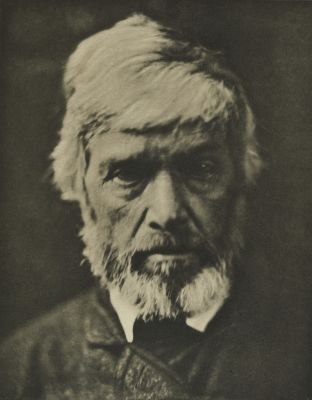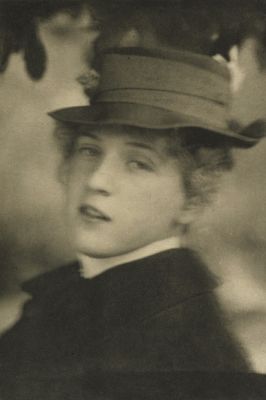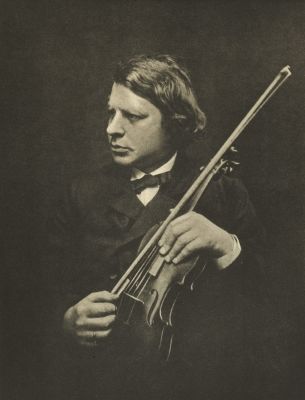
Title
HerschelArtist
Cameron, Julia Margaret (British, 1815-1879)Publication
Camera Work XLIDate
1913 plate (1867 negative)Process
PhotogravureAtelier
Manhattan Photogravure Company, NYImage Size
21.4 x 15.6 cm
Sir John Herschel (1792–1871) was Victorian England’s preeminent scientist, astronomer, and mathematician, considered the equal of Sir Isaac Newton. Cameron met him in 1836 in Cape Town, South Africa, where she was recuperating from illness and he was charting the stars of the southern hemisphere and recording the native flora. Just a few years later Herschel wrote to her in Calcutta of Henry Talbot’s invention of photography and sent her the first photographs she had ever seen—scientific discoveries that were “water to the parched lips of the starved,” she recalled. Of her 1867 portraits of Herschel, she wrote: “From my earliest girlhood I had loved and honoured him, and it was after a friendship of 31 years’ duration that the high task of giving his portrait to the nation was allotted to me,” sounding a bit as though she were working on a divine commission rather than on a personal, spiritual, artistic quest—with, it must be said, some incidental hope of financial profit. [1]
No commercial portrait photographer of the period would have portrayed Herschel as Cameron did here, devoid of classical columns, weighty tomes, scientific attributes, and academic poses—the standard vehicles for conveying the high stature and classical learning that one’s sitter possessed (or pretended to possess). To Cameron, Herschel was more than a renowned scientist; he was “as a Teacher and High Priest,” an “illustrious and revered as well as beloved friend” whom she had known for thirty years. Naturally, her image of him would not be a stiff, formal effigy. Instead, she had him wash and tousle his hair to catch the light, draped him in black, brought her camera close to his face, and photographed him emerging from the darkness like a vision of an Old Testament prophet. [2]
Reproduced / Exhibited
Cox, Julian, Colin Ford, Joanne Lukitsh, and Philippa Wright. Julia Margaret Cameron: The Complete Photographs. London: Thames & Hudson in association with the J. Paul Getty Museum, Los Angeles and the National Museum of Photography, Film & Televison, Bradford, 2003. no. 676.
Langer, Freddy, Timm Starl, and Wilfried Wiegand. Icons of Photography: The 19th Century. Munich: Prestel, 2002. p. 40
Marien, Mary W. Photography: A Cultural History. Englewood Cliffs, NJ: SunSoft Press, 2002. fig. 3.102
Pollack, P. The Picture History of Photography: From the Earliest Beginnings to the Present Day. New York: Harry N. Abrams, Inc, 1998. p. 168.
References
[1] https://www.metmuseum.org/art/collection/search/283097
[2] https://www.metmuseum.org/art/collection/search/282064
Langer, Freddy, Timm Starl, and Wilfried Wiegand. Icons of Photography: The 19th Century. Munich: Prestel, 2002.







